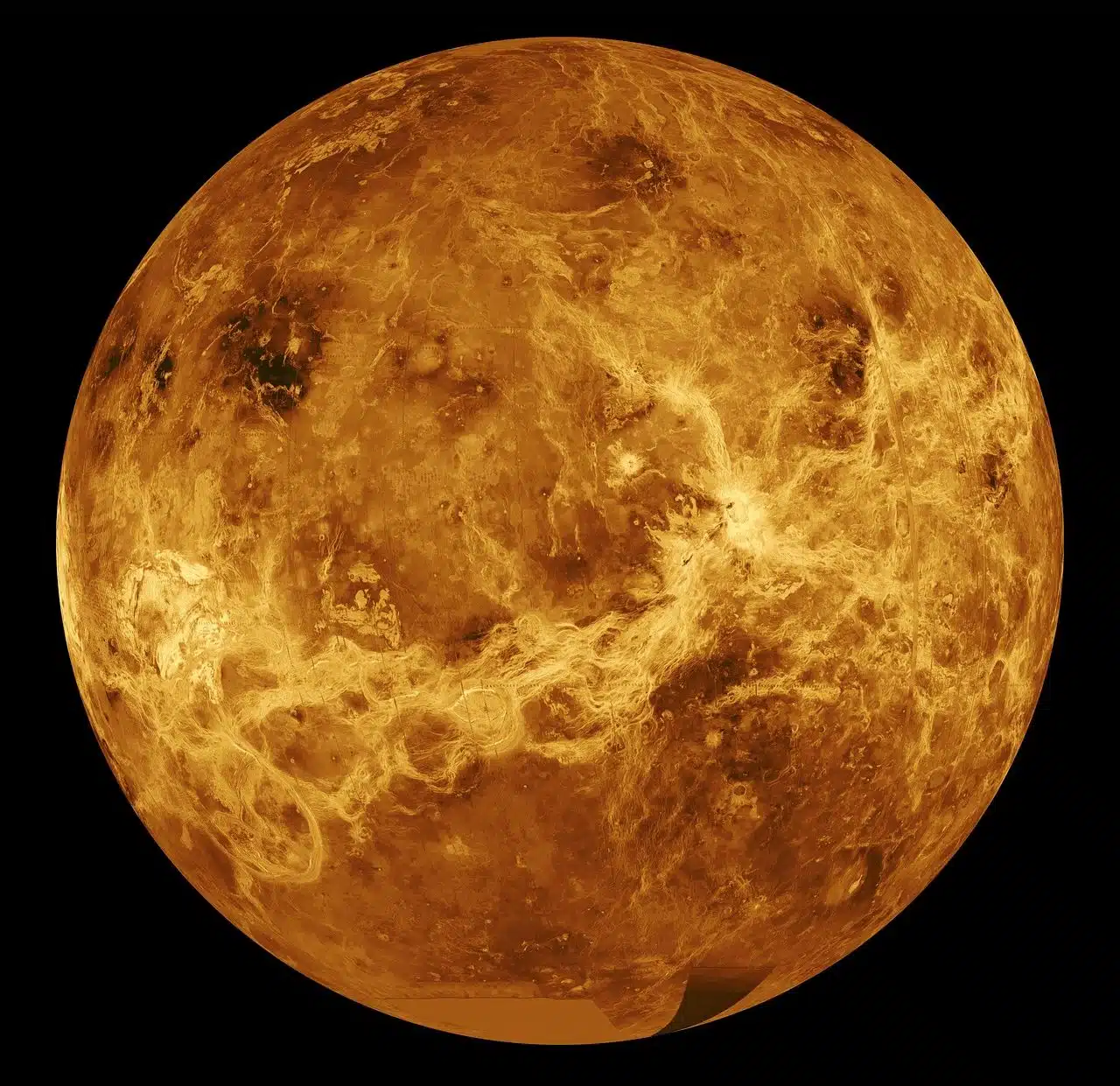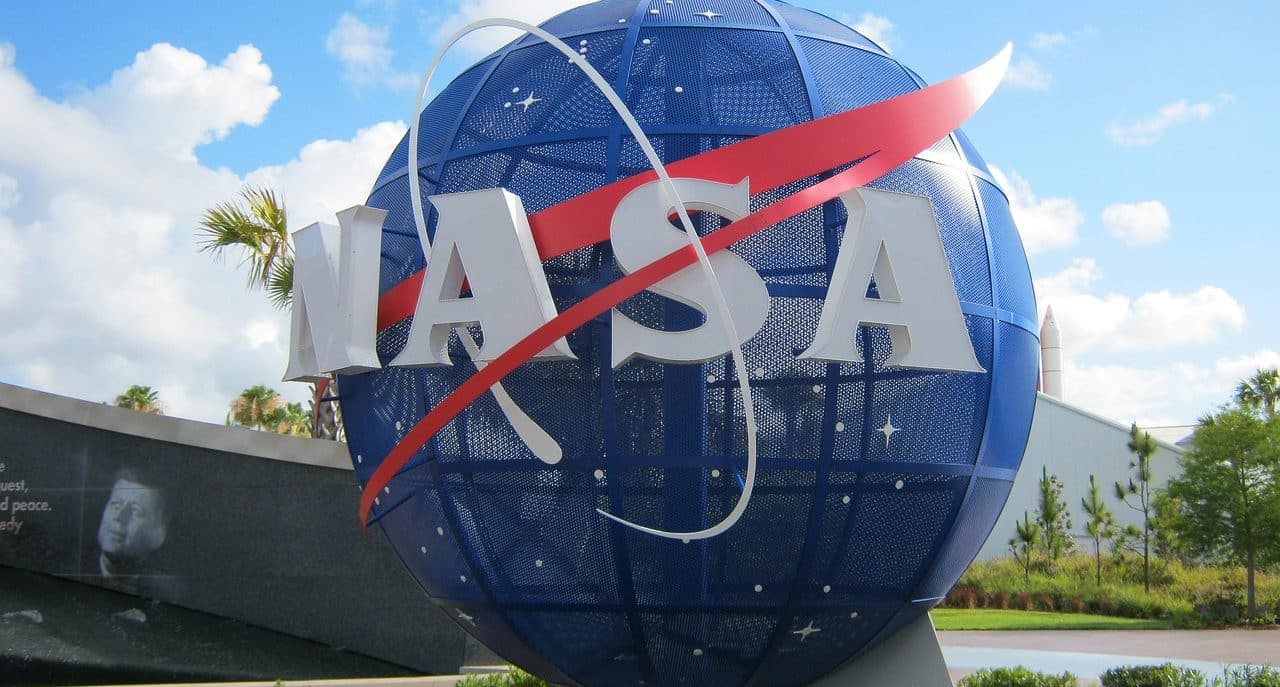
Venus, Earth's sister planet.
Venus is a term with different meanings depending on the context:
- astronomy : Venus is the second planet in the solar system. It is considered the sister planet of Earth , and is located between it and Mercury. It is known for being the brightest apparent object in the sky after the Sun and Moon. Venus is similar in size and composition to Earth, but with a dense atmosphere rich in carbon dioxide, which causes an uncontrolled greenhouse effect and very high surface temperatures;
- mythology : Venus is the Roman deity of love, beauty, desire and fertility. Equivalent to the goddess Aphrodite from Greek mythology, Venus plays an important role in numerous myths and legends;
- art and culture : The term Venus is also used in art and culture to represent feminine beauty . Two examples are Venus and Mars (Botticelli painting) and Venus and Adonis (Shakespeare);
- biology : Less commonly used, but may appear in species names, such as in the Venus flytrap ( Dionaea muscipula ), a carnivorous plant known for its trap-shaped leaves.
types of venus
Paleolithic Venuses are small female statuettes dated to the Upper Paleolithic , spanning from approximately 35,000 to 10,000 years ago. These figures, found in Europe and Asia , often highlight exaggerated female sexual attributes, which has led to various interpretations about their meaning and use in prehistoric societies.
Venus de Milo (sculpture)
A famous statue of the ancient Greek goddess Aphrodite, representing beauty and love . Believed to have been created between 130 and 100 BC , it was discovered on the Greek island of Milo in 1820. The statue is sculpted from white marble from Paros and shows Aphrodite in a classical pose, with serene elegance and timeless beauty. . The Venus de Milo is one of the most iconic works of ancient Greek sculpture and is displayed in the Louvre in Paris, where it attracts millions of visitors each year.
Venus of Willendorf (figurine)
Dating back to around 23,000 BC , it was discovered in Willendorf, Austria, in 1908. Carved from oolitic limestone, this figurine features exaggerated features such as prominent breasts, a rounded belly and wide hips, suggesting it may have been a symbol of fertility. or motherhood in prehistoric culture.
Venus of Lespugue
A figurine from the Paleolithic era believed to have been created around 25,000 BC. It was found in Lespugue, France, in 1922. Sculpted from mammoth ivory, this figurine represents a woman with voluptuous shapes, with a very small head on relationship with the body. It is thought that it may have had a ritual or symbolic meaning in Paleolithic culture.
Venus of Hohle Fels
A Paleolithic figurine dating from approximately 35,000 to 40,000 years ago . It was discovered in a cave in Hohle Fels, Germany, in 2008. Carved from mammoth ivory, it depicts a female figure with stylized features, such as exaggeratedly large breasts and hips, possibly symbolizing fertility or motherhood in Paleolithic culture.

The Birth of Venus by Botticelli, Sandro
Observation and theories
Astronomical observation of Venus has a long history dating back thousands of years. Since ancient times, this bright planet has fascinated observers of all cultures due to its intensity in the night sky .
Observation in ancient times
The first observations of Venus were made by ancient civilizations such as the Sumerians, Babylonians, Egyptians, and later the Greeks and Romans. These cultures assigned it symbolic and divine meanings, and carefully recorded its movements in the sky.
Geocentric theories
During the geocentric era, when Earth was believed to be at the center of the universe, astronomers attempted to explain the erratic movements of Venus using geocentric models. However, these theories were not always able to accurately explain the observed movements, leading to speculation and debate among ancient astronomers.
Heliocentric model
The modern understanding of the movements of Venus and the other planets developed with the adoption of the heliocentric model proposed by Nicholas Copernicus in the 16th century. According to this, Venus and the other planets orbit the Sun, which provided a more precise explanation of their apparent movements in the sky.
Telescopic observations
The development of the telescope in the 17th century allowed astronomers to make more detailed observations of Venus. Galileo Galilei was one of the first to take advantage of this technology, and thus discovered the phases of Venus , similar to those of the Moon. This work supported Copernicus's heliocentric theory and refuted geocentric ideas about the solar system.
Distance measurements
In the 18th century , astronomers began using observations of the transit of Venus to measure the distance between the Earth and the Sun, known as the astronomical unit (AU). These measurements, such as those made between 1761 and 1769 , were crucial to developing a more precise understanding of the scale of the solar system.

The Magellan spacecraft was launched by NASA in 1989 to map the surface of Venus.
Space exploration
Venera (Soviet space program)
A series of space missions carried out by the Soviet Union (and later continued by Russia) with the goal of exploring Venus. Started in the 1960s , the program consisted of more than one space probe that performed multiple flybys, landings and studies in the planet's atmosphere and surface.
Among the most notable achievements of the Venera program are the first successful landings on the surface of Venus and the return of detailed scientific images and data about its atmosphere and planetary geology.
Magellan (spacecraft)
A NASA mission launched in 1989 with the goal of mapping the surface of Venus using ground-penetrating radar. The spacecraft performed comprehensive mapping, providing a detailed view of the topography, geological structures and surface features. During its operational mission, Magellan also investigated the atmosphere of Venus and helped scientists better understand geological processes and its extreme climate.
Venus Express (ESA mission)
A space mission launched by the European Space Agency in 2005 with the aim of studying the atmosphere and surface of Venus. The spacecraft carried a variety of scientific instruments designed to analyze the planet's chemical composition, atmospheric dynamics and climate. During its mission, Venus Express made detailed observations of the Venusian atmosphere and contributed significantly to scientific knowledge about the evolution and functioning of Venus as a planet.
Akatsuki Space Telescope (JAXA)
A space mission of the Japan Aerospace Exploration Agency launched in 2010 with the aim of studying Venus from orbit. Although it initially failed to successfully enter Venusian orbit on its first attempt, due to a problem with the orbital insertion engine, Akatsuki finally succeeded in 2015 .
Equipped with a variety of scientific instruments, including cameras and infrared sensors, Akatsuki has been making detailed observations of the atmosphere and surface of Venus, helping scientists better understand atmospheric dynamics and climate processes on the planet.
